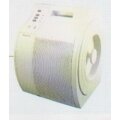 |
Air Purifier Penyaring Udara dan penjernih udara ruangan dari debu atau partikel kecil yang banyak terdapat diudara. Dengan melakukan penyaringan udara diharapkan kita mendapatkan kualitas udara yang lebih baik dan segar dan tentunya dapat mencegah timbulnya berbagai penyakit yang ikut terbawa pada saat kita menghirup udara. Alat penyaring udara yang bagus juga harus mampu menghilangkan kuman, jamur penyebab terjadinya alergi debu.Menghilangkan partikel-partikel dalam udara bisa mengurangi reaksi alergi orang yang menderita sakit asma, demam alergi debu, radang selaput lendir dan masalah pernafasan lainnya.
Air purifier

A Sharp FU-888SV Plasmacluster air purifier.

The same air purifier, cover removed.
An air purifier is a device which removes contaminants from the air. These devices are commonly marketed as being beneficial to allergy sufferers and asthmatics, and at reducing or eliminating second-hand tobacco smoke. Commercial grade air purifiers are manufactured as either small stand-alone units or larger units that can be affixed to an air handler unit (AHU) or to an HVAC unit found in the medical, industrial, and commercial industries.
Use and benefits of purifiers
Dust, pollen, pet dander, mold spores, and dust mite feces can act as allergens, triggering allergies in sensitive people. Smoke particles and volatile organic compounds (VOCs) can pose a risk to health. Exposure to various components such as VOCs increases the likelihood of experiencing symptoms of sick building syndrome.[1] Additionally, with the advancement in technology, air purifiers are becoming increasingly capable of capturing a greater number of bacterial, virus, and DNA damaging particulates. Air purifiers are used to reduce the concentration of these airborne contaminants and are very useful for people who suffer from allergies and asthma.[2] Technological and scientific studies are also finding that poor air quality can be a contributing factor of some forms of cancer, respiratory illnesses, COPD, and other pulmonary infections and illnesses.[citation needed]
Air purifiers also reduce the need for frequent room and area cleaning of dust.[citation needed]
[edit] Purifying techniques
Several different processes of varying effectiveness can be used to purify air. Different processes may remove different contaminants, so there is advantage in using more than one process in a purifier.[3]
- Ultraviolet germicidal irradiation - UVGI can be used to sterilize air that passes UV lamps via forced air. Air purification UVGI systems can be freestanding units with shielded UV lamps that use a fan to force air past the UV light. Other systems are installed in forced air systems so that the circulation for the premises moves micro-organisms past the lamps. Key to this form of sterilization is placement of the UV lamps and a good filtration system to remove the dead micro-organisms. For example, forced air systems by design impede line-of-sight, thus creating areas of the environment that will be shaded from the UV light. However, a UV lamp placed at the coils and drainpan of cooling system will keep micro-organisms from forming in these naturally damp places. The most effective method for treating the air rather than the coils is in-line duct systems, these systems are placed in the center of the duct and parallel to the air flow.
- Filter - based purification traps airborne particles by size exclusion. Air is forced through a filter and particles are physically captured by the filter.
- HEPA filters remove at least 99.97% of 0.3-micrometer particles, and are usually more effective for particles which are larger or slightly smaller. They are effective down to 0.01 micrometers in many cases, but become ineffective for particles smaller than 0.01 micrometer[citation needed]. HEPA purifiers which filter all the air going into a clean room must be arranged so that no air bypasses the HEPA filter. In dusty environments, a HEPA filter may follow an easily cleaned conventional filter (prefilter) which removes coarser impurities so that the HEPA filter needs cleaning or replacing less frequently. HEPA filters do not generate ozone or harmful byproducts.
- Filter for HVAC at MERV 14 or above are rated to remove airborne particles of 0.3 micrometers or larger. A high efficiency MERV 14 filter has a capture rate of at least 75% for particles between 0.3 to 1.0 micrometers. Although the capture rate of a MERV filter is lower than that of a HEPA filter, a central air system can move significantly more air in the same period of time. Using a high-grade MERV filter can be more effective than using a high-powered HEPA machine at a fraction of the initial capital expenditure. Unfortunately, most furnace filters are slid in place without an airtight seal, which allows air to pass around the filters. This problem is worse for the higher-efficiency MERV filters because of the increase in air resistance. Higher-efficiency MERV filters are usually denser and increase air resistance in the central system, requiring a greater air pressure drop and consequently increasing energy costs.
- Activated carbon is a porous material that can adsorb volatile chemicals on a molecular basis, but does not remove larger particles. The adsorption process when using activated carbon must reach equilibrium thus it may be difficult to completely remove contaminants.[4] Activated carbon is merely a process of changing contaminants from a gaseous phase to a solid phase, when aggravated or disturbed contaminants can be regenerated in indoor air sources.[5] Activated carbon can be used at room temperature and has a long history of commercial use. It is normally used in conjunction with other filter technology, especially with HEPA. Other materials can also absorb chemicals, but at higher cost.
- Photocatalytic Oxidation (PCO)' is an emerging technology in the HVAC industry.[6] In addition to the prospect of Indoor Air Quality (IAQ) benefits, it has the added potential for limiting the introduction of unconditioned air to the building space, thereby presenting an opportunity to achieve energy savings over previous prescriptive designs. As of May 2009 [7][8] there was no more disputable concern raised by the Lawrence Berkeley National Laboratory data that PCO may significantly increase the amount of formaldehyde in real indoor environments.[9] As with other advanced technologies, sound engineering principles and practices should be employed by the HVAC designer to ensure proper application of the technology. Photocatalytic oxidation systems are able to completely oxidize and degrade organic contaminants. For example, Volatile Organic Compounds found low concentrations within a few hundred ppmv or less are the most likely to be completely oxidized.[4](PCO) uses short-wave ultraviolet light (UVC), commonly used for sterilization, to energize the catalyst and oxidize bacteria and viruses.[10] PCO in-duct units can be mounted to an existing forced-air HVAC system. PCO is not a filtering technology, as it does not trap or remove particles. It is sometimes coupled with other filtering technologies for air purification. UV sterilization bulbs must be replaced about once a year;[11] manufacturers may require periodic replacement as a condition of warranty. Photocatalytic Oxidation systems often have high commercial costs.[4]
- Ionizer purifiers use charged electrical surfaces or needles to generate electrically charged air or gas ions. These ions attach to airborne particles which are then electrostatically attracted to a charged collector plate. This mechanism produces trace amounts of ozone and other oxidants as by-products.[1] Most ionizers produce less than 0.05 ppm of ozone, an industrial safety standard. There are two major subdivisions: the fanless ionizer and fan-based ionizer. Fanless ionizers are noiseless and use little power, but are less efficient at air purification. Fan-based ionizers clean and distribute air much faster. Permanently mounted home and industrial ionizer purifiers are called electrostatic precipitators.
- Liquid Ioniser purifiers use a capillary to feed liquid into an ionisation field that creates electrically charged liquid ions. Liquid ions only retain a small enough charge so that they are able to float on the wind whilst still effectively purifying the air. Liquid ions attach themselves to airborne particles in a similar way to air ionizer purifiers. However as liquid is charged rather than air/gas they absorb the pollutants in the air. In the process of creating Liquid ions there are no by-products produced such as ozone or oxidants. Liquid ions can be seen by the naked eye under the correct lighting conditions unlike plasma which cannot.
- Ozone generators produce ozone, and are sometimes sold as whole house air cleaners. Unlike ionizers, ozone generators are designed to produce significant amounts of ozone, a strong oxidant gas which can oxidize many other chemicals. The only safe use of ozone generators is in unoccupied rooms, utilising "shock treatment" commercial ozone generators that produce over 3000 mg of ozone per hour. Restoration contractors use these types of ozone generators to remove smoke odors after fire damage, musty smells after flooding, mold (including toxic molds), and the stench caused by decaying flesh which cannot be removed by bleach or anything else except for ozone. However, it is not healthy to breathe ozone gas, and one should use extreme caution when buying a room air purifier that also produces ozone.[12]
- Titanium dioxide (TiO2) technology - nanoparticles of TiO2, together with calcium carbonate to neutralize any acidic gasses that may be adsorbed, is mixed into slightly porous paint. Photocatalysis initiates the decomposition of airborne contaminants at the surface.[13]
Consumer concerns
Other aspects of air cleaners are: hazardous gaseous by-products, noise level, frequency of filter replacement, electrical consumption, and visual appeal. Ozone production is typical for air ionizing purifiers. Although high concentration of ozone is dangerous, most air ionizers produce low amounts (
HEPA technology is used in portable air purifiers as it removes common airborne allergens. The US Department of Energy has requirements manufacturers must pass to meet HEPA requirements. The HEPA specification requires removal of at least 99.97% of 0.3 micrometers airborne pollutants. Products that claim to be "HEPA-type", "HEPA-like", or "99% HEPA" do not satisfy these requirements and may not have been tested in independent laboratories.
Air purifiers may be rated on: CADR; efficient area coverage; air changes per hour, which indicates how frequently the air purifier can exchange all the air in a given room; the clean air delivery rate, which determines how well air has been purified; energy usage; and the cost of the replacement filters.[14]
|



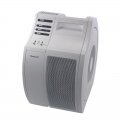
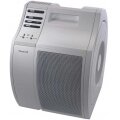
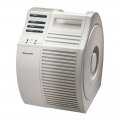
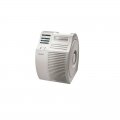

 Kategori
Kategori
 Selamat datang
Selamat datang
 Keranjang
Keranjang
 Lacak
Lacak












